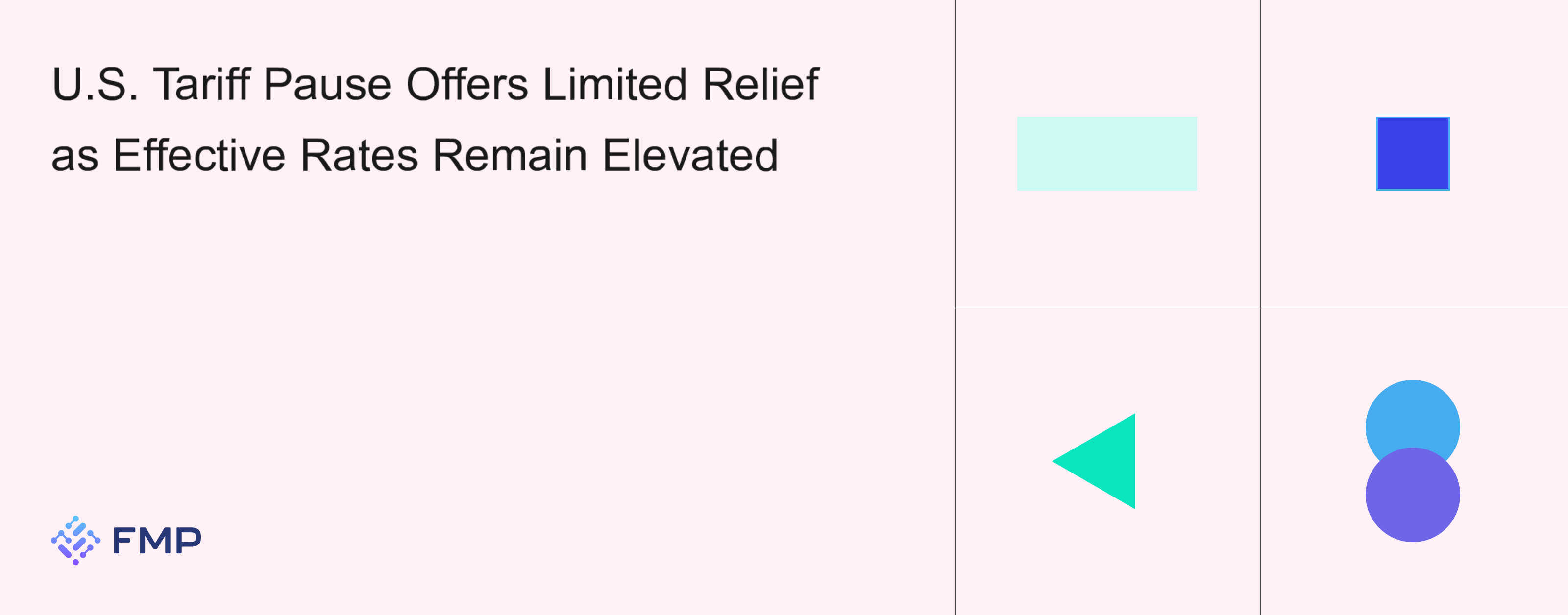
The United States has announced a 90-day pause on newly announced reciprocal tariffs, which, on the surface, signals a temporary softening of trade tensions. However, according to Citi economists led by Andrew Hollenhorst, this pause provides minimal economic relief. The overall tariff burden remains significantly elevated, and the broader impact on trade flows and sector-specific costs continues to mount.
The Structural Tariff Landscape
Despite the pause, the baseline 10% tariff remains intact and is being uniformly applied to all trading partners. This alone represents a considerable increase from earlier levels and continues to contribute to higher effective trade costs.
Citi’s analysis suggests that the average effective U.S. tariff rate is still on track to rise by approximately 21 percentage points compared to the beginning of the year. This projection is only marginally below previous forecasts, meaning the pause does not materially change the broader trajectory of tariff escalation.
No changes have been made to tariffs on Canada and Mexico, while the baseline tariff also applies to domestic calculations in Citi’s models.
China-Specific Tariffs
The most significant escalation is directed at China:
A 105% tariff is set to move forward
An additional 20% is being imposed due to border and fentanyl-related concerns
A preexisting 10% effective tariff rate continues to apply
These measures result in a cumulative tariff load of over 135% on Chinese goods. Even if some of these are reversed after the 90-day pause, Citi notes that the effect may be offset by higher sectoral tariffs or the reinstatement of reciprocal duties.
Sectoral Tariff Pressures
While the headline focus is on reciprocal tariffs, sector-specific tariffs continue to shape trade dynamics. These include:
Autos: Existing tariffs remain, affecting imports and cross-border component supply chains
Steel and Aluminum: Tariffs persist, impacting both pricing and production costs
Pharmaceuticals and Semiconductors: New tariffs are expected, potentially complicating global sourcing strategies
The Sector P/E Ratio API provides current valuation metrics that can reflect the pressure these tariffs may place on specific industries.
Broader Economic Context
The rise in effective tariffs contributes to sustained inflationary pressure and cost volatility across multiple sectors. While the 90-day delay in reciprocal tariffs creates a brief window for potential negotiations, the average trade cost baseline remains high.
Citi maintains that the tariff rate increase forecast is largely unchanged, signaling that the impact on U.S. trade policy and economic conditions remains significant. Sector-level variation is likely, particularly in industries directly targeted by existing or upcoming tariffs.
To contextualize these developments within the macroeconomic calendar, tools like the Economics Calendar API are used to track economic indicators in relation to policy shifts.
Ongoing Developments
The current pause does not indicate a reversal in trade posture. It represents a temporary measure that does not unwind the broader increase in tariffs across sectors and countries. With only a limited reduction in projected effective rates, the impact of tariff policy continues to evolve under a structurally high baseline.
As the 90-day window progresses, further announcements or negotiations may influence the direction, but the current framework suggests persistent trade cost elevation across key sectors.

